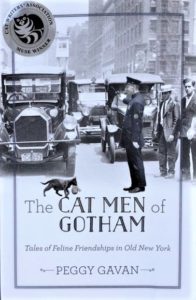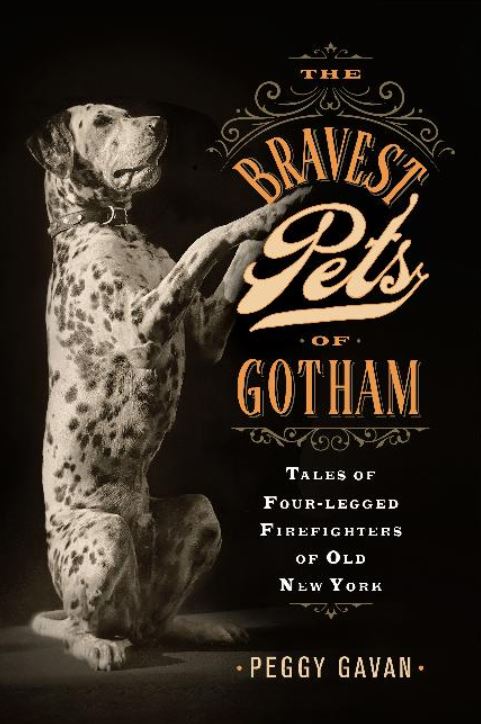NYPD Mounted Police Heroes, Part I

Since 1871, the year that the Board of Police established the first official Mounted Police Unit in New York City, more than a dozen mounted patrolmen have been killed in the line of duty in horse-related incidents. Most of these men died after being violently thrown from their horses when the horses became spooked.
A few men suffered even greater indignity when they were dragged, kicked or crushed by their equine partners after getting tossed to the ground. Two mounted police patrolmen were killed only three years apart while riding the same department horse, Bulb.
Mounated Police Patrolman Christopher John Tierney
Born December 24, 1884, in Ireland, Christopher John Tierney came to America with his mother, Margaret, and sisters Catharine, Margaret and Ellen, in 1892. According to a 1900 U.S. Federal Census Report, Christopher lived with his family at 222 8th Avenue in Manhattan and worked as a messenger boy. Ten years later, he was single, working as a driver, and living with his mother and younger sister at 156 W. 24th Street.
In November 18, 1912, Christopher Tierney was appointed to the New York Police Department as a probationary patrolman. Six years later, on September 12, 1918, he registered for the World War I draft. According to his draft card, he was of medium build and had blue eyes and brown hair.
Christopher never had a chance to serve his country in the war. On September 20, 1919, he was killed while serving the citizens of Brooklyn. There are very few details about his death, but we do know that he was killed when he was thrown from his department horse, Bulb.
In 1919, the NYPD had 143 mounted police (plus 11 sergeants in the mounted units) and 110 mounted patrolmen in Traffic Regulation. Five other New York police officers were also killed in the line of duty in 1919, in non horse-related incidents:
May 23: Ptl. Emil Carbonell, Motorcycle Sqd. 2 (Highway Unit 2), auto accident
July 27: Det. James S. Maher, shot while investigating a homicide
November 10: John J. McCormack, shot during a domestic dispute
November 19: Ptl. James Hughes and Ptl. John McIntyre, Harbor Unit, drowned when their boat capsized
Mounted Police Patrolman Frank J. Mace
Francis (Frank) J. Mace joined the New York Police Department in 1915 at the age of 24. Just like his brother officer, Christopher Tierney, Frank also registered for the World War I draft. According to his draft card, Frank Mace was tall, of medium build, with grey eyes and brown hair. By 1922, Frank was married and residing at 2621 Newkirk Avenue.
On December 11, 1922, the New York Bureau of Public Safety, under the command of Lt. Martin Noonan, initiated a safety campaign to help reduce the number of bad automobile accidents that had been occurring in and around the city. Under the program, police officers were instructed to stop vehicles and inspect their brakes — bad or inoperable brakes were often the cause of the accidents.
On that same day, Frank Mace was patrolling the Flatlands neighborhood on his horse, Bulb. The partners were at the corner of Kings Highway and Flatbush Avenue when a motorized truck driven by John Johnson of Franklin Avenue struck Bulb.
Frank was thrown from his horse and his head struck the roof of another motor car, killing him instantly with a broken neck and fractured skull. Bulb suffered a broken shoulder blade, but a vet with the police department said he could probably be saved. The driver of the truck was arrested and charged with homicide.
Fifteen other New York police officers also died in the line of duty in 1922:
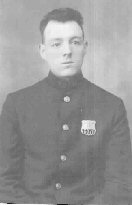
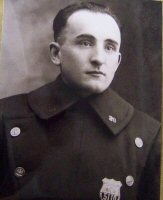
Jan 5: Det. William A. Miller, shot during arrest
Jan 6: Det. Francis M. Buckley, shot during arrest
Jan 19: Ptl. Otto M. Motz, shot by prisoner
Mar 15: Ptl. James H. McMail, shot during arrest
May 10: Henry L. Pohndorf, shot during arrest
May 18: Douglas W Hay, shot by irate citizen
June 24: William Deans, heart attack after being assaulted
July 2: John J. Moriarty, shot during robbery
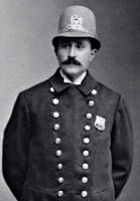
July 14: Frank S. Mundo, accident
July 22: Arthur Loewe, shot
August 2: Albert S. Duffy, explosion
October 10: Peter J. McIntyre, bicycle accident
November 12: Charles Hoffman, hit-and-run auto accident
November 12: Thomas J. Shine, auto accident
December 3: John Kennedy, struck by train
Kings Highway and Flatbush Avenue
In 1922, Kings Highway and Flatbush Avenue were both narrow, curvy dirt roads lined with trees and frame houses with picket fences. It’s interesting to note that the very same intersection where Patrolman Mace lost his life was once called Keskachane (“council fire”), and was the main settlement of the Canarsee band of the Lenape Indians.
Dutch habitation of the area began around the mid-1630s when three plots or “flats” were “purchased” from the Canarsee by Jacobus van Corlear, Wolphert Gerritsen, Andreas Hudde, and Wouter van Twiller, who called their settlement New Amersfoort.
The few dozen residents of New Amersfoort – including the Schencks, Strykers, Van Sigelens and Van Kouwenhovens – lived close to one another in farmhouses near the intersection of Kings Highway and Flatbush Avenue. This town eventually became known as the Flatlands Town Center. In 1664, the town was officially given a charter as the town of Flatlands.
The 73rd Precinct
Both Patrolman Tierney and Patrolman Mace had been assigned to what was known as the 73rd Police Precinct up to July 18, 1924. Prior to this date, the precinct operated out of a station house at 1830 Brooklyn Avenue in Flatlands. (From July 18, 1924, to July 3, 1929, the 73rd was known as the 35th and the 65th in Brownsville was renamed the 73rd; from 1929 to present, the former 73rd of Flatlands has been called the 63rd. Yes, it is all very confusing.)
Today this large 63rd precinct comprises approximately 8.96 square miles with 146.61 miles of street and 1.5 square miles of park, including Flatlands, Mill Basin, Mill Island, Georgetowne, and undeveloped marshlands of the Marine Park area. This precinct also borders a National Park, Gateway National Recreation Area, which it shares related jurisdiction with the United States Park Police. The present-day police station is located just up the street from the former 73rd station at 1844 Brooklyn Avenue.
The New York Mounted Police Unit: The early years

The New York City Police Department began using horse-mounted officers as early as 1858. At a meeting of the Commissioners of Police on January 12, 1858, General Nye reported in favor of a mounted police unit for the upper wards of the city. Nye pointed out that many criminals tried to flee by running toward or into Westchester County, and a mounted police force would be a good deterrent to these opportunities for escape. General Nye told Mayor Tiemann and the Commissioners that he thought 28 horses would be required for 26 officers, so that there would always be two horses in reserve.
During this meeting in 1858, Mayor Daniel F. Tiemann made the following resolution:
“Be it Resolved, that this Board deem it expedient to organize a mounted police of 24 men and 2 sergeants, for the Twelfth, Nineteenth, and Twenty-second Wards, for the better protection of the lives and property in that section of the City.”

According to a map issued in 1860 for Valentine’s Manual of the Corporation of New York, the 22nd Ward was on the west side, from 40th to 85th streets, and included most of the southern portion of Central Park. Ward 19 was on the east side, from 40th to 85th streets, and the 12th Ward covered everything above 86th Street, including the northern section of Central Park, and the hamlets of Manhattanville (west 120s, where the mayor resided) and Carmansville (West 150s).
In Part II of NYPD Mounted Heroes, I’ll tell you about Patrolmen William H. Galbraith and Artemas Fish, who were also killed in the line of duty while patrolling on horseback.
